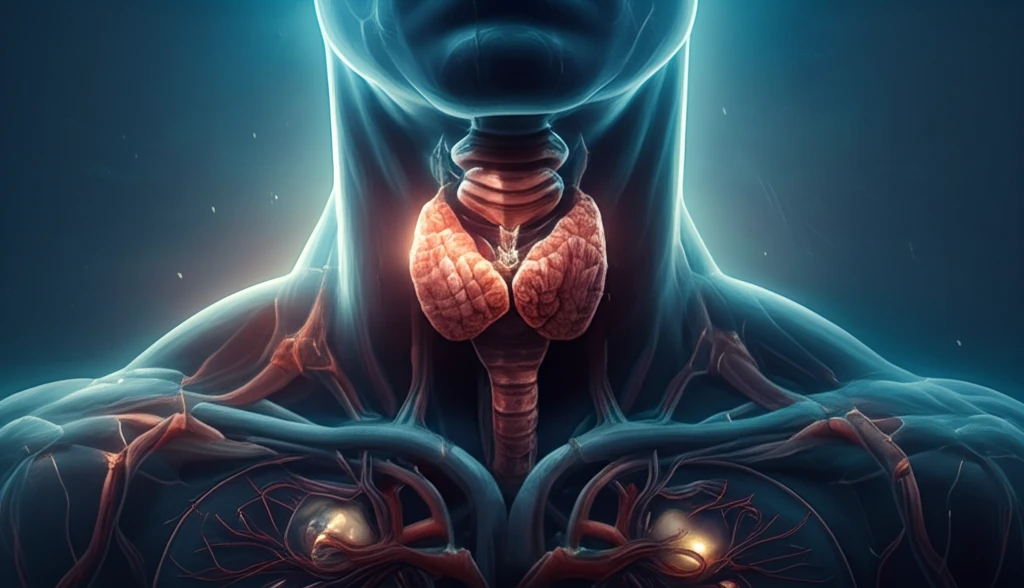
Hidden Thyroid Threat: How a Routine Checkup Missed a Silent Cancer Comeback
"Decades after successful treatment, a rare recurrence of Hürthle cell carcinoma surfaces in an unexpected location, challenging conventional monitoring and long-term surveillance strategies."
Thyroid carcinoma, the most common endocrine malignancy, primarily includes differentiated thyroid carcinoma (DTC), accounting for 90% of cases. While DTC generally carries an excellent prognosis, distant metastases can occur in up to 10% of patients. Metastasis to axillary lymph nodes (ALN) is extremely rare, with only a handful of cases reported in medical literature. Factors such as tumor size, specific histological variants (including tall cell, Hürthle cell, and insular types), and older age can increase the risk of poorer outcomes.
Distant metastasis is relatively uncommon, occurring in about 4% of cases, with papillary thyroid carcinoma having the lowest risk (2%) and follicular and Hürthle cell carcinomas having higher risks (11% and 12%, respectively). Regional lymph node metastases are more frequently observed. However, metastasis to axillary lymph nodes (ALN) is particularly unusual and typically occurs in the context of widespread disease. A review of medical literature reveals only 25 reported cases of ALN metastases from thyroid carcinoma.
This article presents a rare case of Hürthle cell carcinoma, a subtype of DTC, presenting as a solitary axillary lymph node metastasis 17 years after the initial thyroidectomy. This unusual recurrence highlights the importance of long-term surveillance and the potential for atypical presentations in thyroid cancer.
Case Presentation: A Silent Relapse

A 47-year-old male presented with a left-sided neck swelling that had persisted for two months. An ultrasound revealed a 3x3 cm nodule in the left lobe of the thyroid. A fine-needle aspiration cytology (FNAC) indicated papillary thyroid carcinoma (Bethesda VI). The patient underwent a near-total thyroidectomy, and histopathology confirmed a 2.5 x 2.0 cm Hürthle cell carcinoma with vascular invasion. Post-surgery, the patient's serum thyroglobulin (Tg) level was 25 ng/mL.
- Initial Presentation: Neck swelling led to discovery of thyroid nodule.
- Diagnosis: Hürthle cell carcinoma confirmed post-thyroidectomy.
- Treatment: Radioiodine therapy and thyroxine suppression.
- Long-Term Stability: Asymptomatic for 15 years with controlled TSH and Tg levels.
The Importance of Vigilance
This case underscores the critical importance of long-term follow-up in patients with thyroid cancer, even after many years of remission. While metastasis to axillary lymph nodes is rare, it can occur, and early detection through advanced imaging techniques like 18F-FDG PET/CT can significantly impact patient management and outcomes. A multidisciplinary approach, including surgery, radioiodine therapy, and continuous monitoring of thyroglobulin levels, is essential for managing such complex cases and ensuring the best possible prognosis.
